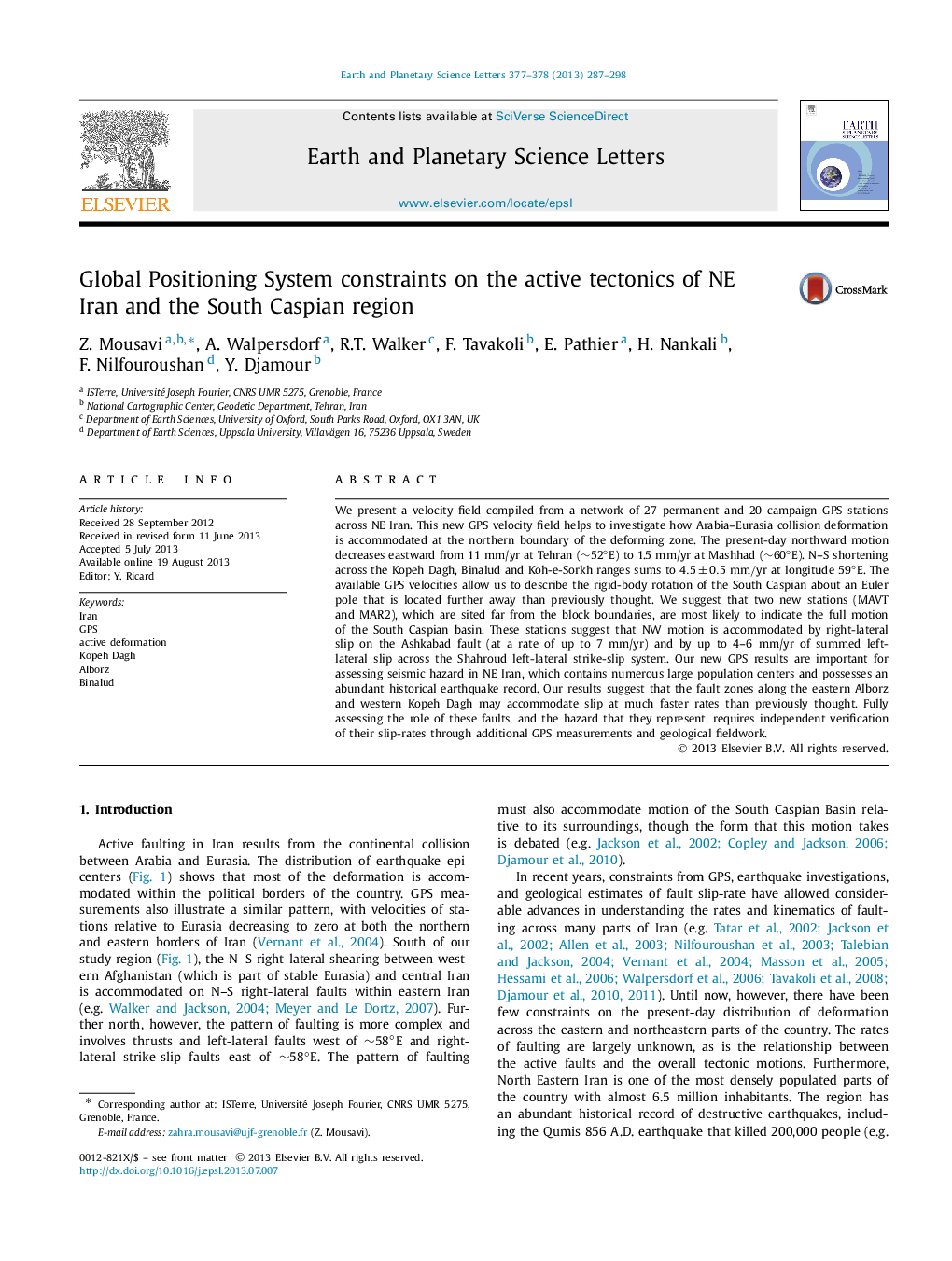| Article ID | Journal | Published Year | Pages | File Type |
|---|---|---|---|---|
| 6430030 | Earth and Planetary Science Letters | 2013 | 12 Pages |
â¢We present geodetic velocity field for the eastern Alborz and Kopeh Dagh in Iran.â¢We find the first geodetic slip rate for strike-slip faults in North-Eastern Iran.â¢We estimate 5.4±1.0 mm/yr of right-lateral movement for Baghan-Quchan Fault Zone.â¢We estimate 5.1±1.0 mm/yr of right-lateral displacement for Ashkabad fault.â¢We find 5.0±1.0 mm/yr of left-lateral movement for Bojnord fault.
We present a velocity field compiled from a network of 27 permanent and 20 campaign GPS stations across NE Iran. This new GPS velocity field helps to investigate how Arabia-Eurasia collision deformation is accommodated at the northern boundary of the deforming zone. The present-day northward motion decreases eastward from 11 mm/yr at Tehran (â¼52°E) to 1.5 mm/yr at Mashhad (â¼60°E). N-S shortening across the Kopeh Dagh, Binalud and Koh-e-Sorkh ranges sums to 4.5±0.5 mm/yr at longitude 59°E. The available GPS velocities allow us to describe the rigid-body rotation of the South Caspian about an Euler pole that is located further away than previously thought. We suggest that two new stations (MAVT and MAR2), which are sited far from the block boundaries, are most likely to indicate the full motion of the South Caspian basin. These stations suggest that NW motion is accommodated by right-lateral slip on the Ashkabad fault (at a rate of up to 7 mm/yr) and by up to 4-6 mm/yr of summed left-lateral slip across the Shahroud left-lateral strike-slip system. Our new GPS results are important for assessing seismic hazard in NE Iran, which contains numerous large population centers and possesses an abundant historical earthquake record. Our results suggest that the fault zones along the eastern Alborz and western Kopeh Dagh may accommodate slip at much faster rates than previously thought. Fully assessing the role of these faults, and the hazard that they represent, requires independent verification of their slip-rates through additional GPS measurements and geological fieldwork.
